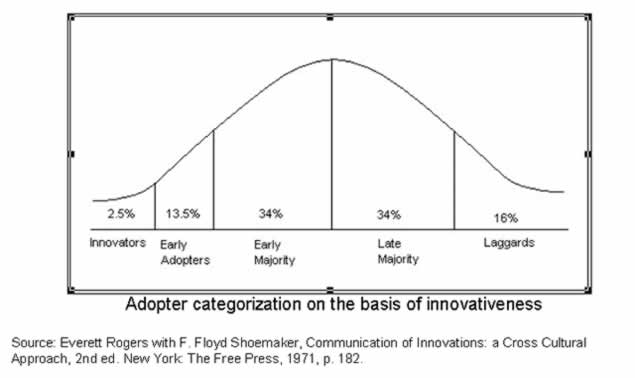Knowledge Transfer: Improving the Process
Knowledge transfer is a process that can include:
~ the
passing on of knowledge, information,
research findings, and/or innovations, and
~ the
adopting and/or adapting and utilizing of such knowledge,
research findings, and/or innovations.
Note:
Innovations can include policy, programmatic,
technological or other kinds of innovations.
The Reality…
~ The knowledge transfer process is often incomplete.
~ Those who engage in knowledge transfer rarely achieve optimal results.
And the Challenge:
~ How
can the knowledge transfer process be improved?
~ What would a more effective approach to knowledge transfer look like?
What Can "Knowledge Transfer" Encompass?
~ Knowledge
or research transfer, knowledge or research application,
knowledge or research utilization, and innovation diffusion are terms
that can be used synonymously.
~ Strategies
involving initial stages of knowledge and information compilation, knowledge
and information dissemination, as well as strategies,
including both reactive and proactive (anticipatory)
knowledge and information dissemination.
What
Else Can Knowledge Transfer Encompass?
What Else Does It Need to Include?
~ Strategies
involving technical assistance, communication,
and training and education;
~ Training and education for potential users;
~ Training and education for those providing the technical assistance;
~ Communication, training, and education involving the training of trainers;
and
~ The overall orchestration and facilitation of the knowledge transfer
process.
Typical Flaws in the Knowledge Transfer Process:
~
The knowledge transfer process only encompasses strategies involving initial
stages of knowledge and information compilation and
knowledge and information dissemination as seen in Slide 3.
Such abbreviated knowledge transfer efforts are apt to lead to
partial results in the adoption and long term utilization
of knowledge, information, and innovations.
~ Having
the requisite knowledge and information in hand is rarely enough
to ensure the adoption and utilization of knowledge, information, research
results, and innovations by potential users.
The
"Bell-Shaped Curve of Adopter Categorization
on the Basis of Innovativeness"
This bell-shaped curve describes the role that different segments of the
population can play in the knowledge transfer process. It can also be
helpful in
describing ways in which the knowledge transfer process can be improved.

Some Reasons that Knowledge Transfer May Be Less Than Optimal
The bell-shaped curve of Rogers and Shoemaker in the previous slide can
shed light on some of the reasons that knowledge transfer and innovation
diffusion processes are often sub-optimized. These reasons can include
the following:
~ The
expertise of the innovators is rarely maximized.
A notable exception can be found in the Office of the Medical Application
of Research (OMAR) at the National Institutes of Health. OMAR has provided
numerous examples of knowledge transfer that have involved efforts to
maximize the expertise of the innovators. (See odp.od.nih.gov/omar/.)
~ Knowledge
transfer efforts are often more reactive than proactive.
Optimally, efforts need to be made to ensure that potential early adopters
as well as late adopters receive the information they need proactively.
The Research Applied to National Needs Program (RANN) of NSF
(now defunct) had particular potential in this regard.
~ Technical
assistance is not provided as part of the process.
A notable exception is the USDA Agricultural Extension Service which has
developed an exemplary approach to knowledge transfer.
Other Reasons that Knowledge Transfer Can Be Less Than Optimal
~
Only a limited range of strategies to help ensure
successful knowledge transfer and knowledge utilization.
~ For instance, there may be no provision for information disseminating mechanisms or clearinghouses that provide "parachutable" guidance materials.
~ There
may be little or no provision for backup technical assistance,
including model programs that could provide technical assistance.
~ There
may be no provision for the use of multi-media approaches, that
could include the use of video, teleconferencing, and online or other
resources to provide training, education, and technical assistance.*
*Note: Some of these approaches are discussed in Paula Gordon's doctoral dissertation, Public Administration in the Public Interest (See Slide 10) and in "Using E-Technology to Advance Homeland Security Efforts", an article by Paula Gordon posted at http://users.rcn.com/pgordon/homeland/.
Other Reasons that Knowledge Transfer Can be Less than Optimal
~ Insufficient
efforts given to identifying and addressing
barriers to change and innovation.
~ Inadequate
attention may be given to the need for "translation" and
networks between and amongst innovators, the early adopters,
the opinion leaders, and the late adopters
~ The
enabling role that opinion leaders can play in the process
may not be fully considered and maximized.
~ Change
agentry principles rarely guide efforts.
In Conclusion…
~ The knowledge transfer process is often incomplete.
~ Knowledge
transfer efforts need to encompass a full range of strategies
and take into consideration a wide variety of factors.
~ Improving
the knowledge transfer process ideally includes
individuals who understand the process and
who are able to facilitate and orchestrate the process
so that the potential of the process can be as fully realized as possible.
*******
Paula Gordon is an Independent Consultant and a member
of the Practitioner Faculty of the Johns Hopkins University. Her Web site
on homeland security is at users.rcn.com/pgordon/homeland/.
There is a link to her archived Web site on Y2K at that same location.
Paula Gordon's doctoral dissertation, Public Administration in the Public Interest, is available to authorized users of academic libraries through the ProQuest Digital Dissertations (PQDD) service and the "Current Research @" service. The full text of the dissertation can be downloaded from a PDF file. The now defunct Research Applied to National Needs Program of the National Science Foundation is also discussed in this dissertation.
Paula
D. Gordon, Ph.D.
pgordon@erols.com
Poster
presentation for the Association for Enterprise Integration (AFEI):
Enterprise Integration EXPO 2003 (September 23-25, 2003)
